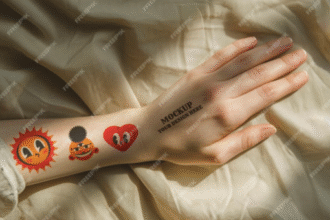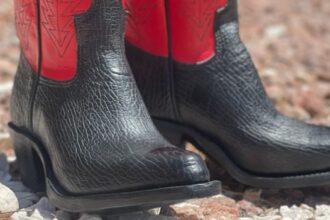Step back in time to the vibrant decade of the 1940s, a period teeming with creativity and resilience. As World War II shaped lives around the globe, it also left an indelible mark on fashion. The 1940s style emerged as a unique blend of practicality and glamour, reflecting both the struggles and triumphs of its time. From tailored silhouettes to bold patterns, this era introduced iconic looks that continue to inspire today’s wardrobes.
As we explore the essence of 1940s style, prepare to dive into a world where each garment tells a story. Whether you’re drawn to classic pin-up aesthetics or sophisticated wartime chic, there’s something about this decade that resonates deeply with modern sensibilities. Let’s uncover what makes 1940s fashion timeless and how you can infuse its charm into your own personal style!
Key elements of 1940s style
The 1940s style is characterized by a blend of practicality and elegance. One of the key elements was the silhouette. Women often wore tailored dresses that emphasized the waist, creating an hourglass figure.
Fabrics played a vital role too. Wool and cotton were popular choices, offering durability during tough times while still allowing for fashionable designs. Patterns like polka dots or floral prints added charm.
Men’s fashion embraced sharp suits with wide lapels, paired with fedora hats for a polished look. Textile rationing influenced styles, encouraging creativity in design without sacrificing flair.
Accessories completed outfits beautifully. Gloves, hats, and vintage jewelry brought personality to every ensemble. Footwear also transitioned; women favored structured heels while men opted for classic oxfords or brogues.
These elements together captured the spirit of resilience and sophistication that defined 1940s style amidst changing social landscapes.
Iconic fashion trends of the decade
The 1940s was a decade defined by bold and innovative fashion trends. Amid the constraints of war, creativity thrived. Women’s clothing embraced elegance with tailored silhouettes that accentuated the waist.
Tea-length dresses became popular, offering a blend of femininity and practicality. Fabrics like rayon and gabardine emerged as staples due to material shortages.
Men’s suits evolved too, featuring broader shoulders and tapered trousers. The double-breasted jacket was emblematic of this era, capturing both authority and style.
Accessories played a significant role in completing outfits. Gloves were essential for women, while hats adorned every man’s head— from fedoras to newsboy caps.
Footwear also saw transformation; classic pumps ruled women’s wardrobes while men opted for sturdy oxfords or loafers. Each trend reflected not just personal style but resilience during challenging times in history.
The influence of WWII on fashion
World War II had a profound impact on fashion, shaping trends in unexpected ways. As resources became scarce, clothing underwent significant changes. Designers turned to practicality and functionality. This was the era of utility.
Fabric rationing forced women to adapt their wardrobes creatively. Skirts became shorter while silhouettes streamlined for efficiency. Tailored suits emerged as symbols of empowerment, reflecting women’s changing roles during the war.
Military influences were evident everywhere. Inspired by soldiers’ uniforms, many styles featured structured shoulders and clean lines. The colors borrowed from military palettes included deep greens, navy blues, and earthy tones.
Even evening wear transformed dramatically under wartime constraints. Glamour remained essential but with an emphasis on simplicity and elegance that spoke volumes about resilience.
Fashion magazines began promoting these practical yet stylish looks as a way to uplift spirits amid uncertainty—a testament to how adversity can inspire innovation in design.
How to incorporate 1940s style into modern wardrobes
Incorporating 1940s style into your modern wardrobe is easier than you might think. Start with classic silhouettes that define the decade. Think high-waisted trousers and A-line skirts, which flatter various body types.
Accessorizing is key. Vintage-inspired brooches, hats, and gloves can elevate any outfit instantly. Look for bold patterns like polka dots or florals that were popular during this era.
Don’t shy away from tailored blazers—these add a polished touch reminiscent of wartime fashion while remaining versatile today. Pair them with fitted tops for a balanced look.
Footwear also plays an essential role; opt for Mary Janes or loafers to complete your ensemble.
Mix in contemporary pieces to keep the look fresh and relevant without losing its vintage charm. Play around with textures like linen or wool to achieve authenticity while staying comfortable.
Fashion icons of the 1940s style
The 1940s was a vibrant era known for its remarkable fashion icons. Celebrities of the time left an indelible mark on style, blending glamour with practicality.
One standout figure is Katharine Hepburn. Her chic trousers and tailored blouses challenged traditional femininity, paving the way for women to embrace comfort without sacrificing elegance.
Then there’s Rita Hayworth, whose dazzling gowns showcased Hollywood’s allure. Her sultry looks became synonymous with glamour, inspiring countless designs throughout the decade.
Another icon was Lauren Bacall. With her striking features and sophisticated wardrobe, she epitomized confidence and poise. Bacall’s sharp silhouettes were both timeless and edgy.
We can’t forget about Bette Davis. Known for her bold personality as much as her eclectic style choices, she wore everything from fitted dresses to dramatic accessories that defined a generation of fierce femininity in fashion.
Tips for creating a timeless and authentic 1940s look
To achieve a timeless 1940s look, start with the silhouette. Fitted waistlines and full skirts are essential for women. Consider A-line dresses or tea-length styles that flatter your figure.
For men, opt for tailored suits with broad shoulders. High-waisted trousers paired with a crisp button-up shirt exude classic charm.
Accessorize thoughtfully. Women can enhance their outfits with vintage gloves and pearl necklaces. Men should consider suspenders and fedoras to complete the ensemble.
Footwear matters too. Choose Mary Janes or classic pumps for women, while men can go for polished Oxfords or brogues.
Pay attention to hair and makeup. Soft waves or victory rolls work wonders for women’s hairstyles, while men might sport slicked-back looks or side parts.
Staying true to authentic colors like earthy tones and pastels will elevate your style even further. Embrace these elements to channel genuine 1940s flair effortlessly.
Conclusion
The 1940s style remains a vibrant and timeless influence in the world of fashion. Characterized by its elegance, practicality, and unique silhouettes, this era has left an indelible mark on our wardrobes today. By understanding the key elements that defined this decade—from structured dresses to tailored suits—you can bring a touch of vintage charm into your modern outfits.
Whether you’re inspired by the boldness of wartime styles or the glamour associated with Hollywood starlets, integrating 1940s aesthetics into your clothing choices is both enjoyable and achievable. Remember to focus on authentic pieces while also experimenting with contemporary items for a fresh twist.
As you explore iconic trends like high-waisted trousers or tea-length dresses, keep in mind the influential figures from that time who helped shape these styles. Icons such as Katharine Hepburn and Rita Hayworth serve as reminders of how powerful fashion can be when it reflects personal expression.
With some creativity and thoughtful selection, creating a wardrobe imbued with 1940s style will not only revive classic looks but also celebrate an era rich in history and artistic flair. Embrace this journey through time. Your closet will thank you for it!

















